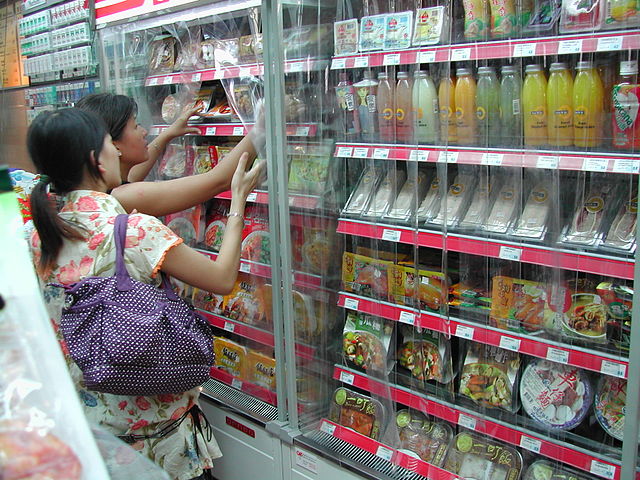China’s love affair with online shopping and convenience stores
The penetration rate of convenience stores and online shopping in China has jumped to 32% and 38% respectively from last year’s 19% and 35%, according to a Nielsen report.
The global performance management company says in terms of sales and penetration, superstores and supermarkets are losing their market share to convenience stores and online platforms, as more and more people, especially the young, prefer to use these two emerging channels, which are more convenient.
According to Nielsen China vice president Rachel Ma, Chinese consumers used to shop mainly at hyper/supermarkets when stocking up on household basics. But fewer do that now, preferring to get what they need at convenience stores or online, she said.
“Generally speaking, consumers are purchasing less at brick and mortar stores – basket sizes have decreased,” she said.
Price increasingly important to online sales
The main factors driving Chinese consumers to choose online shopping are cheaper prices, the ease of price comparison and delivery service.
Indeed, almost seventy percent (68%) of respondents go online shopping when there are sales. And the lure of cheaper goods was cited by nearly two-thirds of those surveyed by Nielsen as the reason they buy things online, up considerably from 42% last year.
And more than half of the respondents — up from just 15% the previous year — said they prefer online shopping platforms because they make it easier to compare prices.
Another 54% of respondents said they shop online because of the delivery service, up from 42% last year.
Nielsen says sales and promotion are still effective ways to also attract consumers and that online shopping platforms have been ramping up their promotional efforts of late. The penetration of shopping festivals is up to 95% and along with the mushrooming of shopping festivals and various kinds of promotions, the price war is among various ecommerce platforms is becoming fiercer.
It also warns that competition is getting fiercer among online shopping platforms due to product homogeneity, requiring companies to differentiate themselves and build competitive advantages.
Convenience makes mobile e-commerce king
One of the most interesting changes to note is that in the last year, the mobile has overtaken the PC as China’s most popular device for online shopping. According to Nielsen, 81% of online shoppers use smartphones while just 59% use desktops and 57% use laptops. The overriding reason for the popularity of mobile shopping is convenience — 71% consumers say they find mobile devices more convenient than PCs. What’s more, 52% of the respondents said they prefer mobile devices because of the convenience of mobile payments, a rise of 10% year-over-year.
According to the China Electronic Commerce Information Center, the number of Chinese online payment users had reached 416 million by December 2015 — an increase of 112 million, or 36.8% — since the end of 2014. And mobile payment usage also soared last year, with the number of users reaching 358 million, an increase of 64.5%. The percentage of netizens who use mobile payments increased from 39.0% to 57.7%.
Superstores must offer pleasant shopping, attractive promotions
Nielsen research shows the penetration rate of hypermarkets and supermarkets did increase slightly in 2015, by two and one percentage points respectively, to reach 78% and 82%, and the frequency of visits by customers remains stable. However, the average shopping basket value fell from 172.4 RMB in 2014 to 162.7 RMB.
The fact that the sales and penetration growth rates for convenience stores and online shopping are outpacing those of traditional superstores and supermarkets is forcing the latter to transform so as to better meet consumers’ changing needs. They also have to adapt to the fact that the rise of online platforms has helped clue up consumers. These increasingly savvy shoppers are paying closer attention to promotions and how pleasant their shopping experiences are in store. Nielsen says the latter this can be harnessed by such stores to competitive advantage.
Friendly service, a wide selection of products, convenient location, an organised assortment and clean environment are the other factors which most influence superstore and supermarket shoppers.
Underlining the importance of location and brand image, 19% of the respondents said they had visited newly opened hyper/supermarkets in the past six months and convenient location (55%) and a good reputation (46%) are the main reasons they go to a new market.
“Therefore, hyper/supermarkets should focus on promoting brand image, interesting promotional activities to retain customers. In addition to that, opening new stores and exploring online platforms to attract new consumers are also important,” Nielsen said.



